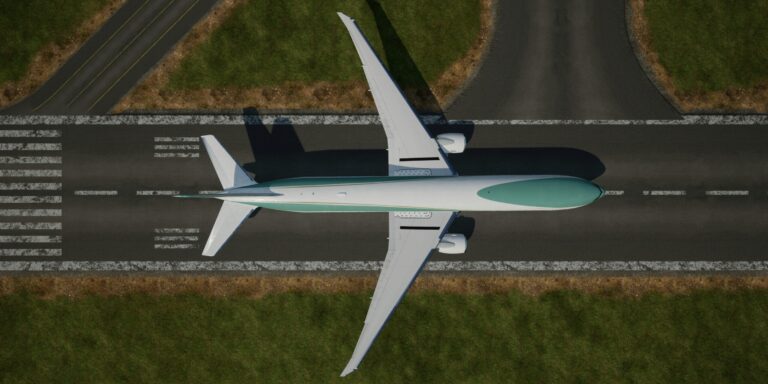Honeywell International Inc. has announced a significant leadership change as it prepares to spin off its aerospace unit into a separate publicly traded company by 2026. On November 3, the company revealed that Jim Currier, a veteran executive with nearly two decades of experience at Honeywell, will take over as President and CEO of the aerospace division. This move is part of Honeywell’s broader corporate strategy to streamline operations and focus more sharply on its core segments.
Currier’s appointment is more than just a change in leadership; it signals Honeywell’s commitment to ensuring stability and expertise as it restructures its business. Having served as President and CEO of Honeywell’s Aerospace Technologies division since 2023, Currier brings a wealth of experience in aviation systems, defense contracts, and commercial aerospace operations. His deep familiarity with the business is expected to ease the transition of the unit from a segment of a conglomerate into a fully independent, publicly traded entity.
Also announced was the appointment of Craig Arnold as chairman of the future aerospace company’s board. Arnold will join the board immediately and take over as chairman once the spin-off is completed. This governance structure is designed to provide continuity and strategic oversight as the new company prepares to operate autonomously in a competitive and fast-evolving industry.
Honeywell’s decision to pursue this spin-off aligns with a growing trend among industrial conglomerates to simplify their business models. Companies such as General Electric and 3M have recently undertaken similar strategies, breaking up sprawling operations into more focused, standalone entities. Investors have increasingly favored these transformations, arguing that they help unlock shareholder value and improve operational efficiency. By separating business units that serve different markets and have distinct growth trajectories, these firms aim to allow each entity to pursue tailored strategies with clearer financial reporting and accountability.
In Honeywell’s case, the aerospace unit has long been a cornerstone of its operations, producing everything from aircraft engines and avionics to advanced navigation and connectivity systems. Despite facing global challenges such as trade tariffs, supply-chain disruptions, and rising production costs, the aerospace division has remained a strong performer. In fact, Honeywell recently raised its 2025 profit outlook for the segment, citing continued demand in both commercial and defense aviation markets. The rebound in air travel, coupled with increased investment in aircraft modernization and sustainability, has bolstered the segment’s prospects.
The timing of the leadership change appears calculated to provide stability during a critical phase of transformation. With Currier now set to lead the unit into its next chapter, Honeywell is demonstrating its confidence in the aerospace business’s ability to thrive independently. Currier is expected to oversee not only the spin-off preparations but also the execution of growth strategies tailored to the unique needs of the aerospace sector. These include enhancing supply-chain resilience, pursuing new defense contracts, and expanding into next-generation technologies such as electric propulsion and digital flight systems.
The decision also reflects the rising importance of agility and specialization in today’s industrial landscape. As technologies evolve and customer expectations shift, conglomerates are finding it more effective to operate smaller, more focused companies that can respond quickly to market demands. For Honeywell, this means positioning each of its key businesses—automation, performance materials, and aerospace—as distinct entities capable of delivering tailored solutions and building stronger customer relationships.
From an investor perspective, the spin-off could generate significant value. As a stand-alone company, the aerospace unit would have its own management, financial goals, and capital structure, providing greater transparency and potentially making it a more attractive investment. Analysts believe that separating the aerospace business could lead to improved margins, faster innovation cycles, and a clearer strategic focus.
The move also comes at a time when aerospace is undergoing a transformation driven by sustainability goals, technological innovation, and increased defense spending in certain markets. Companies in this space are exploring alternative fuel systems, autonomous flight capabilities, and enhanced connectivity—all areas where Honeywell already has a strong footprint. As an independent company, the aerospace division would likely have more freedom to pursue strategic partnerships, acquisitions, or investments that align specifically with its mission and market opportunities.
In the broader context, Honeywell’s restructuring serves as a case study in how legacy conglomerates are adapting to modern economic realities. By reshaping itself into a more agile and purpose-driven organization, Honeywell is not only responding to investor pressures but also laying the groundwork for long-term growth in distinct sectors. The aerospace spin-off is expected to be finalized in the second half of 2026, pending regulatory approval and other customary conditions.
Until then, all eyes will be on Jim Currier and the leadership team as they guide the aerospace division through this complex and high-stakes transformation. Their success will not only impact Honeywell’s future but also signal how effectively industrial giants can reinvent themselves in a rapidly changing global economy.


